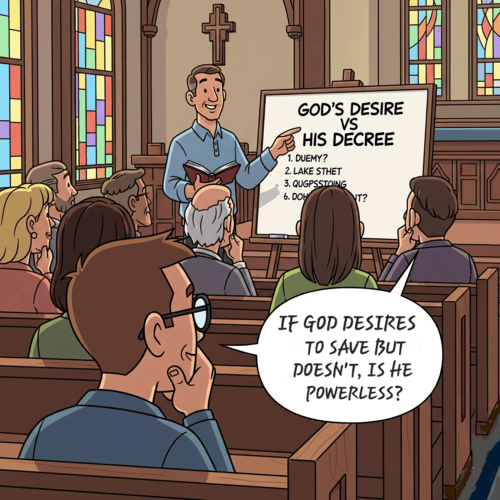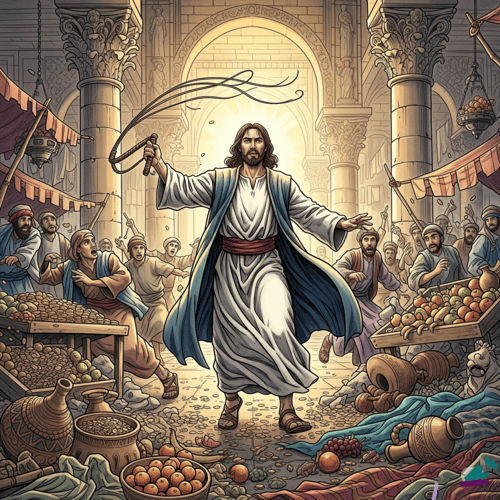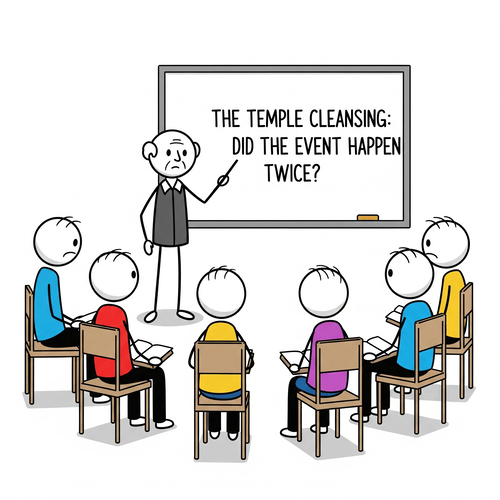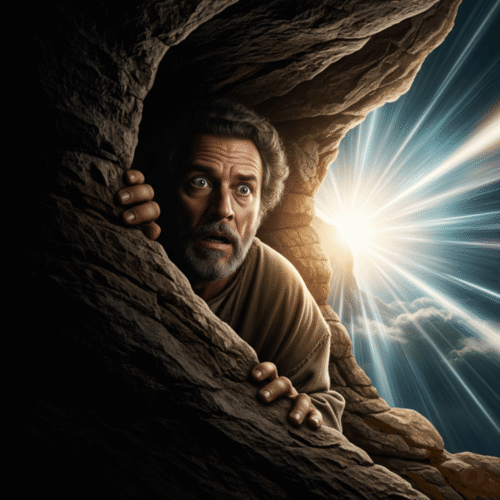What Is the Shekinah Glory? Can Believers Experience It Today?
When Moses descended from Mount Sinai with the stone tablets, his face shone so bright the Israelites could barely look at him directly. What had he encountered up there? What was this blazing glory that left him literally glowing with divine radiance?
The Shekinah Glory—from the Hebrew word meaning “to dwell”—represents God’s visible, tangible presence among His people. It’s the moment when the invisible God makes Himself known in ways that human senses can perceive. But here’s the question that haunts many believers today: if God’s glory was so powerfully present in the Old Testament, why don’t we experience it the same way now?
WHEN HEAVEN TOUCHED EARTH: THE OLD TESTAMENT MANIFESTATIONS
Scripture records breathtaking moments when God’s glory broke into our world with unmistakable power. When the Israelites completed the tabernacle, “the cloud covered the tent of meeting, and the glory of the LORD filled the tabernacle” so intensely that even Moses couldn’t enter (Exodus 40:34-35). Centuries later, at Solomon’s temple dedication, the priests couldn’t perform their service because “the glory of the LORD filled the house of the LORD” (1 Kings 8:11).
These weren’t subtle spiritual experiences. They were overwhelming, visible manifestations that left no doubt about God’s presence. The cloud by day, the fire by night, the glory that required veils and barriers—this was the Shekinah Glory in its fullest Old Testament expression.
WHAT DID MOSES ACTUALLY SEE ON MOUNT SINAI?
When Moses boldly asked, “Please show me your glory,” God’s response reveals something profound about divine revelation. God declared, “You cannot see my face, for man shall not see me and live” (Exodus 33:20). Instead, God placed Moses in the cleft of a rock and covered him while His glory passed by, allowing Moses to see His “back” but not His face.
From a Reformed perspective, this encounter demonstrates divine accommodation—God condescending to reveal Himself within the limits of human capacity. What Moses saw wasn’t the full, unveiled essence of God’s being, but a gracious revelation suited to his creaturely limitations. When God proclaimed His name—“The LORD, the LORD, a God merciful and gracious, slow to anger, and abounding in steadfast love and faithfulness” (Exodus 34:6-7)—He was revealing His moral attributes, His covenant character.
The glory Moses experienced wasn’t just spectacular light and power; it was the revelation of God’s redemptive heart toward His people.
THE GLORY INCARNATE: CHRIST, THE ULTIMATE SHEKINAH
In the Reformed understanding, Jesus Christ is the ultimate Shekinah Glory. John writes with theological precision: “And the Word became flesh and dwelt among us, and we have seen his glory, glory as of the only Son from the Father, full of grace and truth” (John 1:14). The word “dwelt” is literally “tabernacled”—Jesus is the true tabernacle where God’s glory dwells permanently.
The Transfiguration wasn’t just a preview of Christ’s future glory; it was the unveiling of who He’d always been. Peter, James, and John witnessed the same divine glory that filled Solomon’s temple, but now dwells in human flesh. Even more remarkably, Jesus displayed the ultimate glory not in blazing light, but in His sacrificial death. “The hour has come for the Son of Man to be glorified,” Jesus declared before His crucifixion (John 12:23). The cross, not just the mountaintop, reveals God’s glory.
DO BELIEVERS EXPERIENCE THE SHEKINAH GLORY TODAY?
This brings us to the heart of the matter. Can New Testament believers experience the same visible, tangible glory that Moses encountered? The Reformed answer is both yes and no—and understanding this distinction is crucial.
Yes, believers experience God’s glory, but in a fundamentally different way. Paul writes our bodies are “a temple of the Holy Spirit” (1 Corinthians 6:19). The same glory that filled the Old Testament temple now dwells within every believer. When Jesus promised, “Where two or three are gathered in my name, there am I among them” (Matthew 18:20), He was describing a real, spiritual presence that surpasses even the Shekinah Glory of the temple.
But no, we don’t typically experience the visible, overwhelming manifestations that characterised the Old Testament period. Why not? Reformed theology offers several key insights:
- Those dramatic manifestations served a specific redemptive-historical purpose. They pointed forward to Christ, the ultimate revelation of God’s glory. Now that Christ has come, the shadows have given way to the reality.
- God has ordained the ordinary means of grace—His Word, prayer, and the sacraments—as the primary ways He reveals Himself to His people. These aren’t lesser revelations; they’re the chosen vehicles through which God’s glory is consistently made known.
- Our fallen nature still requires the veil between us and God’s unveiled glory. Even Moses needed protection from the fullness of divine glory. We await the day when we’ll “see him as he is” (1 John 3:2), but that day hasn’t yet arrived.
WHY NOT EVERYDAY EXPERIENCE?
The absence of constant, visible glory in the Christian life isn’t a sign of spiritual deficiency—it’s evidence of God’s wisdom. Reformed theology emphasises we live in the “already-not yet” tension of redemptive history. We already possess the Spirit of glory, but we’re not yet in the glorified state where we can fully apprehend it.
Moreover, God’s glory is perfectly present in the ordinary means of grace. When Scripture is faithfully preached, when the sacraments are properly administered, when believers gather for worship—God’s glory is genuinely present and active. The lack of visible fireworks doesn’t diminish the reality of divine presence.
This isn’t to say God never manifests His glory in extraordinary ways today. But Reformed theology maintains that believers shouldn’t expect or demand such manifestations. Our confidence rests not in spectacular experiences but in God’s faithful promises and His established means of grace.
FUTURE HOPE: THE ESCHATOLOGICAL SHEKINAH
The ultimate answer to our longing for God’s visible glory lies in the future. Revelation 21:3 promises a day when “the dwelling place of God is with man. He will dwell with them, and they will be his people, and God himself will be with them as their God.”
The New Jerusalem will have no temple because “its temple is the Lord God the Almighty and the Lamb” (Revelation 21:22). Indeed, there will be no need for sun or moon either, “for the glory of God gives it light, and its lamp is the Lamb” (Revelation 21:23). The Shekinah Glory itself will be our eternal light.
This isn’t just a return to Eden—it’s the consummation of everything the Old Testament Shekinah Glory foreshadowed. We’ll see God face to face, not in momentary glimpses like Moses, but in permanent, unmediated fellowship.
CONCLUSION: LIVING IN THE LIGHT OF THE SHEKINAH GLORY
So how should Reformed believers live in light of the Shekinah Glory?
- With appropriate reverence and awe. The God who filled the temple with unapproachable light is the same God we approach through Christ.
- With growing holiness, recognising we’re being transformed “from one degree of glory to another” (2 Corinthians 3:18).
- With patient hope, knowing what we long for most deeply—the full revelation of God’s glory—is promised to us in Christ.
The Shekinah Glory isn’t absent from the Christian life; it’s present in a new and better way. We don’t need to chase after extraordinary manifestations when the extraordinary has already been made ordinary through the indwelling Spirit. We live as temples of the living God, carrying His glory into a world that desperately needs to see it.
The question isn’t whether believers can experience God’s glory today. The question is whether we have eyes to see the glory that’s already all around us—in His Word, in His people, in His ordinary means of grace, and ultimately in the face of Jesus Christ, who is the radiance of God’s glory and the exact imprint of His nature. One day, we won’t need the sun or moon, for the Shekinah Glory itself will be our eternal light. Until that day, we live as temples of the living God, carrying His glory into a world that desperately needs to see it.
That’s a glory worth seeing, worth living for, and worth sharing with the world.
THE SHEKINAH GLORY: RELATED FAQs
Is the term “Shekinah” actually found in the Bible? No, the word “Shekinah” itself doesn’t appear in Scripture—it’s a later rabbinical term derived from the Hebrew root shakhan (to dwell). Reformed scholars John Frame and Vern Poythress emphasise the terminology may be post-biblical, but the concept it describes is thoroughly biblical. The absence of the specific term in Scripture doesn’t diminish the reality of God’s dwelling presence it consistently describes.
- How do we distinguish between God’s glory and the Shekinah Glory? Reformed scholars typically view the Shekinah Glory as a specific manifestation of God’s general glory—His visible, localised presence among His covenant people. John Calvin distinguished between God’s essential glory (which is infinite and invisible) and His accommodated glory (how He reveals himself within creaturely limitations). The Shekinah represents God’s condescending accommodation to human perception, not a separate divine attribute.
- What happened to the Shekinah Glory when the temple was destroyed in 586 BC? According to Ezekiel’s vision, the glory of the Lord departed from the temple before its destruction (Ezekiel 10:18-19). Reformed commentators Matthew Henry and John Calvin saw this as God’s judicial withdrawal due to Israel’s covenant unfaithfulness. However, Ezekiel also prophesied the glory’s return (Ezekiel 43:1-5), which Reformed theology understands as ultimately fulfilled in Christ’s incarnation and the church as God’s new temple.
Did the Shekinah Glory appear in the New Testament beyond Christ’s transfiguration? Most Reformed scholars identify several potential manifestations: the star of Bethlehem, the glory that appeared to the shepherds, and possibly the light that struck Paul on the Damascus road. However, they emphasise these were transitional revelations pointing to Christ as the ultimate and permanent Shekinah. Post-apostolic Christianity, they argue, should not expect such extraordinary manifestations as normative experiences.
- How do we respond to Pentecostal claims that we can experience God’s visible glory today? Reformed scholars generally affirm God can manifest His glory visibly today but argue He typically works through ordinary means of grace rather than extraordinary signs. Theologians John MacArthur and RC Sproul maintained that while God is sovereign and free to act extraordinarily, believers should neither expect nor seek such manifestations. They emphasise the completed canon of Scripture and the indwelling Holy Spirit provide sufficient revelation of God’s glory.
- What is the relationship between the Shekinah Glory and the Trinity? Reformed theology sees the Shekinah Glory as a manifestation of the entire Trinity, not just the Father. The cloud and fire are connected to the Spirit’s presence, while the glory ultimately finds its fullest expression in the Son. Theologian BB Warfield argued Old Testament theophanies were often pre-incarnate appearances of Christ. The Shekinah Glory thus reveals the triune God’s unified work in redemption.
Why do some theologians reject the concept of Shekinah Glory entirely? Some Reformed scholars, particularly those emphasising covenant theology’s discontinuity aspects, argue that focusing on “Shekinah Glory” can lead to unhealthy mysticism or expectations of extraordinary experiences. They prefer to speak simply of God’s presence through Word and Spirit. However, this remains a minority position—most Reformed theologians embrace the concept while carefully defining it within proper theological boundaries and emphasizing its fulfillment in Christ.
THE SHEKINAH GLORY: OUR RELATED POSTS
Editor's Pick

From Empty to Overflow: The Abundant Life Jesus Promised
(AND WHY YOU SHOULDN’T SETTLE FOR LESS) We're surviving, but are we thriving? If we're honest, there's a gap between [...]

What Does Jesus Save Us From?
THREE BIBLE TRUTHS ABOUT SALVATION "Jesus saves." We’ve seen it on bumper stickers, heard it shouted at sporting events, maybe [...]

If God Wants Everyone Saved, Why Aren’t They?
THE REFORMED VIEW ON GOD’S DESIRE VS HIS DECREE The question haunts every believer who has lost an unbelieving loved [...]

The One Man Mystery in Acts 17:26: Is It Adam Or Noah?
When the Apostle Paul stood before the philosophers at Mars Hill, he delivered an insightful statement about human unity: “And [...]

Megiddo Or Jerusalem: Where Did King Josiah Die?
Recent archaeological discoveries at Tel Megiddo continue to reveal evidence of Egyptian military presence during the late 7th century BC, [...]

Losing Your Life Vs Wasting It: How Are the Two Different?
AND WHY DID JESUS PRAISE THE FORMER? Jesus spoke one of the most perplexing statements in Scripture: “For whoever wants [...]

Can Christians Be Demon Possessed? What the Bible Teaches
Perhaps you’ve witnessed disturbing behavior in a professing Christian, or you’ve struggled with persistent sin and wondered if something darker [...]

Sacred Fury: What Christ’s Temple Cleansing Truly Means
Mark 11 records the crack of a handmade whip that echoed through the temple corridors. Tables crashed to the ground, [...]

Did Jesus Cleanse the Temple Twice?
OR DID JOHN DISAGREE WITH THE SYNOPTICS ON TIMING? One of sceptics’ favourite "gotcha" questions targets what they see as [...]

Self-Authentication: Why Scripture Doesn’t Need External Validation
"How can the Bible prove itself? Isn't that circular reasoning?" This objection echoes through university classrooms, coffee shop discussions, and [...]
SUPPORT US:
Feel the Holy Spirit's gentle nudge to partner with us?
Donate Online:
Account Name: TRUTHS TO DIE FOR FOUNDATION
Account Number: 10243565459
Bank IFSC: IDFB0043391
Bank Name: IDFC FIRST BANK






